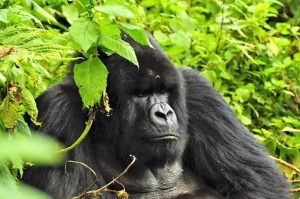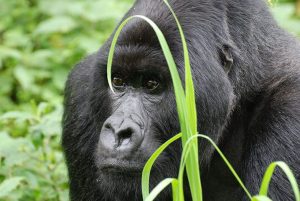Why is it important to pack correctly for a safari?
Packing correctly for a safari ensures comfort, safety, and convenience during your adventure. Safaris often involve long game drives, exposure to varying weather conditions, and time spent in remote wilderness areas. Packing the right gear helps you stay prepared for heat, cold, insects, and dust while ensuring you carry all essentials for wildlife viewing and photography. Since most safari lodges and camps are located far from major What Should You Pack for a Safari?towns, forgetting crucial items can cause difficulties. Correct packing also allows you to comply with luggage restrictions on light aircraft used in many safari destinations across Africa.
What clothing should you pack for a safari?
You should pack lightweight, breathable clothing made from cotton or moisture-wicking fabrics. Long-sleeved shirts and trousers protect against sunburn, mosquitoes, and scratches from bushes. Neutral tones like khaki, beige, brown, or olive help you blend into the environment, making wildlife viewing easier. For hot afternoons, short-sleeved shirts and shorts work well, while evenings often require a warm jacket or sweater. Women may also pack sports bras for bumpy drives and versatile scarves for sun and dust protection. Always include a wide-brimmed hat for sun safety. What Should You Pack for a Safari?
What footwear is best for a safari?
You should pack sturdy, closed-toe shoes or lightweight hiking boots for walking safaris or bush treks. Comfortable sneakers work well for daily game drives. Flip-flops or sandals are convenient for wearing around the lodge, especially after long days in the vehicle. Ensure shoes are broken in before the trip to avoid blisters. Waterproof shoes are not usually necessary unless your safari falls during the rainy season.
Should you pack neutral colors for safari clothing?
Yes, you should pack clothing in neutral earth tones because they blend with the natural environment. Neutral colors like olive, brown, and khaki reduce visibility to animals, increasing your chances of close encounters. Bright colors such as red, yellow, or blue may disturb wildlife, while dark colors like black and navy attract tsetse flies. Wearing camouflage patterns is illegal or discouraged in many African countries, so avoid military-style prints. What Should You Pack for a Safari?
What essential safari gear should you bring?
Essential safari gear includes binoculars for wildlife spotting, a quality camera, spare memory cards, a durable backpack, and a reusable water bottle. A headlamp or small flashlight is vital for camps without electricity. Pack a lightweight rain jacket for unpredictable weather, and consider a quick-dry towel for personal use. Zip-lock bags help protect electronics and documents from dust and moisture. A travel pillow and blanket may also improve comfort on long drives.
Do you need binoculars for a safari?
Yes, you should pack binoculars because many animals stay at a distance from safari vehicles. Binoculars allow you to see details clearly, from bird species in trees to predators on the horizon. While some lodges and guides provide binoculars, having your own ensures convenience and better viewing quality. A compact pair with at least 8x or 10x magnification works best for safari use.
What type of camera is best for safari photography?
A DSLR or mirrorless camera with a telephoto lens (200mm or more) is best for capturing wildlife at a distance. If you prefer compact options, advanced point-and-shoot cameras with strong zoom capabilities also work well. Bring spare batteries, chargers, and multiple memory cards to avoid missing important moments. A beanbag or stabilizer helps steady your camera during game drives, especially when photographing from vehicles.
What health and safety items should you pack for a safari?
You should pack a personal first-aid kit that includes bandages, antiseptic wipes, pain relievers, and any prescription medications. Hand sanitizer, wet wipes, and mosquito repellent with DEET are crucial for hygiene and insect protection. Sunscreen with high SPF protects against strong UV rays. A medical mask or dust scarf may be useful on long, dusty drives. Travel insurance details and emergency contacts should also be kept accessible.
Do you need insect repellent and sunscreen on safari?
Yes, insect repellent and sunscreen are essential. Mosquitoes and other biting insects are common in many safari regions, and repellent helps prevent discomfort and disease. Strong sunscreen protects your skin from the intense African sun, especially during midday drives. Reapply both products regularly throughout the day for maximum effectiveness.
What travel documents are essential for a safari?
Essential documents include your passport, visa (if required), safari permits, and copies of travel insurance. Keep both digital and printed copies of important documents. Some safaris, such as gorilla trekking in Uganda or Rwanda, require permits that must be presented on-site. Store documents in a waterproof travel pouch or wallet for added protection.
Should you pack medications for a safari?
Yes, you should pack personal medications in sufficient quantities for the duration of your trip. Include malaria prophylaxis, which is strongly recommended for many safari regions. Bring motion-sickness tablets if you are prone to nausea during bumpy drives. Over-the-counter medications for headaches, stomach upset, or allergies are also useful. Carry medicines in their original packaging along with prescription notes to avoid issues at border controls.
How much luggage can you bring on a safari?
Most safaris impose strict weight limits, especially if you travel by small aircraft between parks. Soft-sided duffel bags are preferred because they fit easily into safari vehicles and planes. Typical limits range between 15–20 kg (33–44 lbs) per person, including carry-on bags. Always confirm baggage restrictions with your safari operator in advance. Traveling light also makes your journey easier and more flexible.
Do you need a backpack for day trips on safari?
Yes, a small backpack is essential for carrying water, snacks, sunscreen, insect repellent, a camera, and personal items during daily game drives. Choose a lightweight, durable backpack with multiple compartments for easy organization. Backpacks also help you keep essentials accessible without disturbing other travelers in shared vehicles.
What toiletries are essential for a safari?
You should pack basic toiletries such as toothbrush, toothpaste, shampoo, soap, deodorant, and feminine hygiene products. Eco-friendly toiletries are ideal for minimizing environmental impact. Wet wipes and tissues are particularly useful during long drives when restroom facilities are limited. Many safari lodges provide toiletries, but carrying your own ensures you have everything you need.
Should you bring reusable water bottles on safari?
Yes, a reusable water bottle is essential for hydration during safaris. Many lodges provide clean drinking water that you can refill throughout the day. Reusable bottles reduce plastic waste and ensure you always have water during long drives. Some bottles also feature built-in filters, which provide extra peace of mind in remote locations.
Do you need a power bank or travel adapter on safari?
Yes, you should pack a power bank for recharging phones and cameras, especially in camps with limited electricity. Travel adapters are necessary if your electronics have different plug types from the local system. In many safari camps, electricity is available only at certain hours, so portable charging solutions keep your devices ready.
What snacks or food items are useful on safari?
Energy bars, nuts, dried fruit, and biscuits make excellent safari snacks. They provide quick energy during early morning drives when breakfast is light or delayed. Pack snacks in resealable bags to keep them fresh and dust-free. Avoid perishable items that may spoil in the heat. Many lodges also provide packed lunches or snacks, but carrying your own ensures variety and convenience.
What optional luxury items can make a safari more comfortable?
Optional items include a journal for documenting experiences, an e-reader or book for downtime, and a lightweight travel blanket for chilly mornings. A good pair of polarized sunglasses enhances visibility in bright conditions. Some travelers also carry portable Wi-Fi devices to stay connected in remote areas, although part of the safari charm lies in disconnecting.
Should you pack for cold nights and early mornings on safari?
Yes, early mornings and nights on safari can be surprisingly cold, even in Africa. You should pack a warm fleece, jacket, gloves, and a wool hat for comfort during dawn and dusk game drives. Layering is key: wear warm clothing in the morning, then switch to lighter clothes as the day heats up. Camps at higher altitudes, such as Ngorongoro Crater, experience particularly chilly nights.
Why is light packing recommended for safaris?
Light packing is recommended because of luggage restrictions, the remote nature of safari camps, and the need for mobility. Carrying only what you need reduces stress and makes travel between parks smoother. Many lodges offer laundry services, so you can re-wear clothing instead of overpacking. Packing light also leaves room for souvenirs and ensures compliance with small aircraft weight limits.
Final Thoughts
Packing the right items for a safari determines how comfortable, safe, and enjoyable your trip will be. By focusing on practical clothing, essential gear, health and safety items, and lightweight luggage, you prepare for both the challenges and the excitement of the African wilderness. Always confirm specific requirements with your safari operator, as rules may vary by region and activity. With the right preparation, your safari will be a once-in-a-lifetime adventure.




